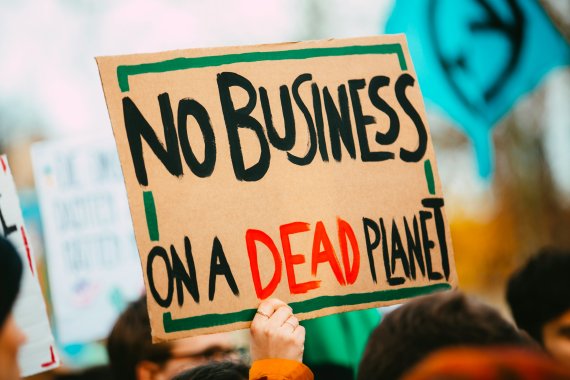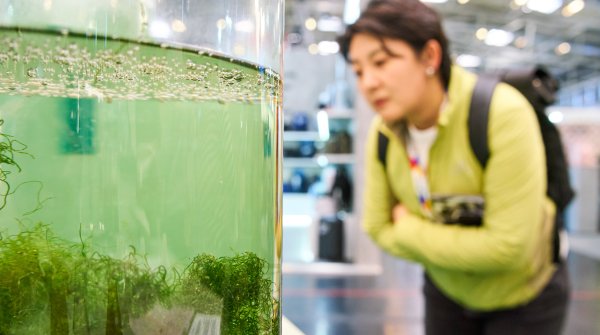ISPO.com: A few years ago, there were lots of green claims, but things have gotten more complicated. For instance, in 2022, the Dutch Consumer and Market Authority revealed that Decathlon was using eco-design claims without clear valuation criteria. They agreed to stop using these claims and paid €400,000 to sustainable causes. The term "green hushing" appeared. Should companies communicate about sustainability in marketing, or leave it to sustainability reports?
Diana Born: That's a great question. In the past, many green claims were made without data validation. Claims like "This is more sustainable" or "This is climate neutral" often had little evidence. Now, legal practices are catching up, requiring more transparency. Environmental data can be hard to obtain, and sometimes marketing and communication teams aren't as informed as those in sourcing or product development. It's become essential for marketing teams to collaborate with sustainability departments to ensure accurate claims.
There are three main reasons: Sustainability claims are good for profit, the environment, and investors. Firstly, studies show that products with sustainability claims have higher sales growth. Secondly, consumers' choices impact the planet. Choosing products with lower footprints benefits the climate. Thirdly, investors are increasingly interested in sustainability management. The EU has introduced regulations like the Corporate Sustainability Reporting Directive to guide investment decisions. Proper sustainability claims can attract investments for future products.
It's crucial to keep communicating because consumers' decisions impact the planet. For example, if a raincoat generates 70kg of CO2 emissions over its lifecycle, millions of such purchases add up significantly. Offering products with lower emissions can make a big difference. The EU has regulations to ensure consumers are better informed and not misled by vague claims. Achieving net zero greenhouse gas emissions by 2050 requires collective action from all sectors, including consumers making informed choices.
Start with a science-based approach and have your data ready. Conduct a double materiality analysis to understand your company's impact on sustainability and vice versa. For products, perform a full lifecycle assessment to measure the carbon footprint and other impacts.

Effective communication about sustainability should adhere to four key principles: materiality, completeness, precision, and verification.
- Material Communication: Focus on the aspects of your products or processes that have significant environmental impacts. For example, if a component like a magnet in a bicycle helmet has a substantial carbon footprint, that should be clearly communicated.
- Completeness: Address the entire lifecycle of the product. It's not enough to highlight one optimized process if it represents only a small part of the product's overall impact.
- Precision: Be clear and specific in your claims. Use understandable language and ensure that your claims are detailed enough to be meaningful. Transparency about the sources of your materials and their end-of-life impacts is crucial.
- Verification: Having your claims independently verified is essential to maintain credibility. This helps in aligning with regulatory requirements and building consumer trust.
Materiality involves focusing on significant aspects of your product's lifecycle. For example, in a buckle made of a magnet and plastic, the magnet's carbon footprint might be higher. Communicate about what you're doing to address the largest impact. Transparency is key, as shown by brands like Rab, which disclose recycled materials and environmental impact clearly.
Completeness means covering the entire lifecycle of a product, not just optimized processes. For instance, if you use recycled plastic in a product, provide the carbon emission savings for the entire product, not just the plastic component.
Precision involves targeting consumer groups appropriately and using clear, understandable language. For example, if you use recycled PET for polyester, be transparent about where the material comes from and its end-of-life recycling potential. Puma provides a good example by clearly stating the sources of recycled materials in their soccer jerseys.

Verification means getting external validation for your claims. With over 200 sustainability labels out there, it's essential to use externally verified labels to ensure transparency. Brands like Picture Organic Clothing work with Clear Fashion to provide detailed product ratings.
Marketing and communication processes need to change to include sustainability validations and collaborations with sustainability departments. Internal processes must be set up to ensure claims are checked and verified before campaigns are published. Building capacity within marketing teams to understand sustainability is also crucial.
For company-level targets, science-based targets for nature are becoming relevant. Tools like info.link from House of Change help validate claims and provide compliant information through QR codes. Circularity.ID from Circular Fashion offers a QR code system to facilitate recycling and resale of products.
Use science-based methods, validate your claims, and keep communicating. These are essential steps to ensure effective and credible sustainability communication.
EU Regulation about Green Claims:
There are two relevant EU directives. First of all, the ‘Empowering Consumers for the Green Transition’ Directive (EU) 2024/825 that entered into force in March 2024 and has to be applied from September 2026 on. This directive prohibits certain claims and statements about future performances if they are vague (e.g. ‘environmentally friendly’) and gives first claiming criteria (e.g. being clear whether the environmental claim is valid for a part or the entire product). The second one is called ‘Green Claims Directive’, for which the commission adopted a proposal in 2023, which is still in the legislative process. It further specifies claim and label requirements such as scientific approaches and verification through external and independent bodies.
Empowering Consumers for the Green Transition Directive: https://commission.europa.eu/live-work-travel-eu/consumer-rights-and-complaints/sustainable-consumption_en
Green Claims Directive: https://environment.ec.europa.eu/topics/circular-economy/green-claims_en
Greenhushing
This describes a behavior where companies avoid communicating details about i.e. their climate targets in an "attempt to avoid scrutiny and allegations of greenwashing." The Financial Times quoted a study by South Pole that found that a quarter of 1,200 surveyed companies in 12 countries said they "would not publicize their science-based net zero emissions targets, a road map for reducing emissions in line with the goals of the Paris Agreement.
- ISPO awards
- Mountain sports
- Bike
- Design
- Retail
- Fitness
- Health
- ISPO Job Market
- ISPO Munich
- ISPO Shanghai
- Running
- Brands
- Sustainability
- Olympia
- OutDoor
- Promotion
- Sports Business
- ISPO Textrends
- Triathlon
- Water sports
- Winter sports
- eSports
- SportsTech
- OutDoor by ISPO
- Heroes
- Transformation
- Sport Fashion
- Urban Culture
- Challenges of a CEO
- Trade fairs
- Sports
- Find the Balance
- Product reviews
- Newsletter Exclusive Area
- Magazine






